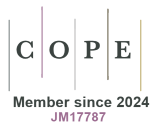A case of exaggerated placental site treated with hysteroscopy
DOI:
https://doi.org/10.33393/ao.2024.2611Keywords:
Fertility, Hysteroscopy, Miscarriage, TrophoblastAbstract
Exaggerated placental site (EPS) is a benign lesion that can occur in association with term pregnancy, ectopic pregnancy, molar pregnancy, intrauterine fetal death or miscarriage. The characteristics of EPS are described in several case reports and have been reported after major surgery such as hysterectomy. We describe the hysteroscopic characteristic of EPS associated with a spontaneous miscarriage. Hysteroscopic inspection of the uterine cavity revealed copious tissue with increased vascularization without signs of invasion. No cleavage was visualized between material and myometrium could be established during the resection procedure. 40 days after hysteroscopy the patient became pregnant. The pregnancy proceeded without complications and during the cesarean section no residual placenta-related abnormal site appearance was noted on inspection of the uterine wall. The hysteroscopic treatment could be considered feasible to preserve future fertility in young women in cases of suspect non-malignant trophoblastic disease.
References
- Takebayashi A, Kimura F, Yamanaka A, et al. Exaggerated placental site, consisting of implantation site intermediate trophoblasts, causes massive postpartum uterine hemorrhage: case report and literature review. Tohoku J Exp Med. 2014 Sep;234(1):77-82. https://doi.org/10.1620/tjem.234.77 PMID: 25186195 DOI: https://doi.org/10.1620/tjem.234.77
- Catena U, D’Ippolito S, Campolo F, Dinoi G, Lanzone A, Scambia G. Hysteroembryoscopy and hysteroscopic uterine evacuation of early pregnancy loss: a feasible procedure in selected cases. Facts Views Vis ObGyn. 2022;14(2):193-197. PMID:35781118 https://doi.org/10.52054/FVVO.14.2.020 PMID:35781118 DOI: https://doi.org/10.52054/FVVO.14.2.020
- Hasegawa T, Matsui K, Yamakawa Y, Ota S, Tateno M, Saito S. Exaggerated placental site reaction following an elective abortion. J Obstet Gynaecol Res. 2008;34(4 Pt 2):609-612. https://doi.org/10.1111/j.1447-0756.2008.00894.x PMID:18840164 DOI: https://doi.org/10.1111/j.1447-0756.2008.00894.x
- Cholkeri-Singh A, Zamfirova I, Miller CE. Increased fetal chromosome detection with the use of operative hysteroscopy during evacuation of products of conception for diagnosed miscarriage. J Minim Invasive Gynecol. 2020;27(1):160-165. https://doi.org/10.1016/j.jmig.2019.03.014 PMID:30926368 DOI: https://doi.org/10.1016/j.jmig.2019.03.014
- Jauniaux E, Halder A, Partington C. A case of partial mole associated with trisomy 13. Ultrasound Obstet Gynecol. 1998 Jan;11(1):62-64. https://doi.org/10.1046/j.1469-0705.1998.11010062.x PMID: 9511199 DOI: https://doi.org/10.1046/j.1469-0705.1998.11010062.x
- Geisler JP, Mernitz CS, Hiett AK, Geisler HE, Cudahy TJ. Trisomy 21 fetus co-existent with a partial molar pregnancy: case report. Clin Exp Obstet Gynecol. 1999;26(3-4):149-150. PMID:10668140
- Liu G, Yuan B, Wang Y. Exaggerated placental site leading to postpartum hemorrhage: a case report. J Reprod Med. 2013 Sep-Oct;58(9-10):448-450. PMID: 24050037.









